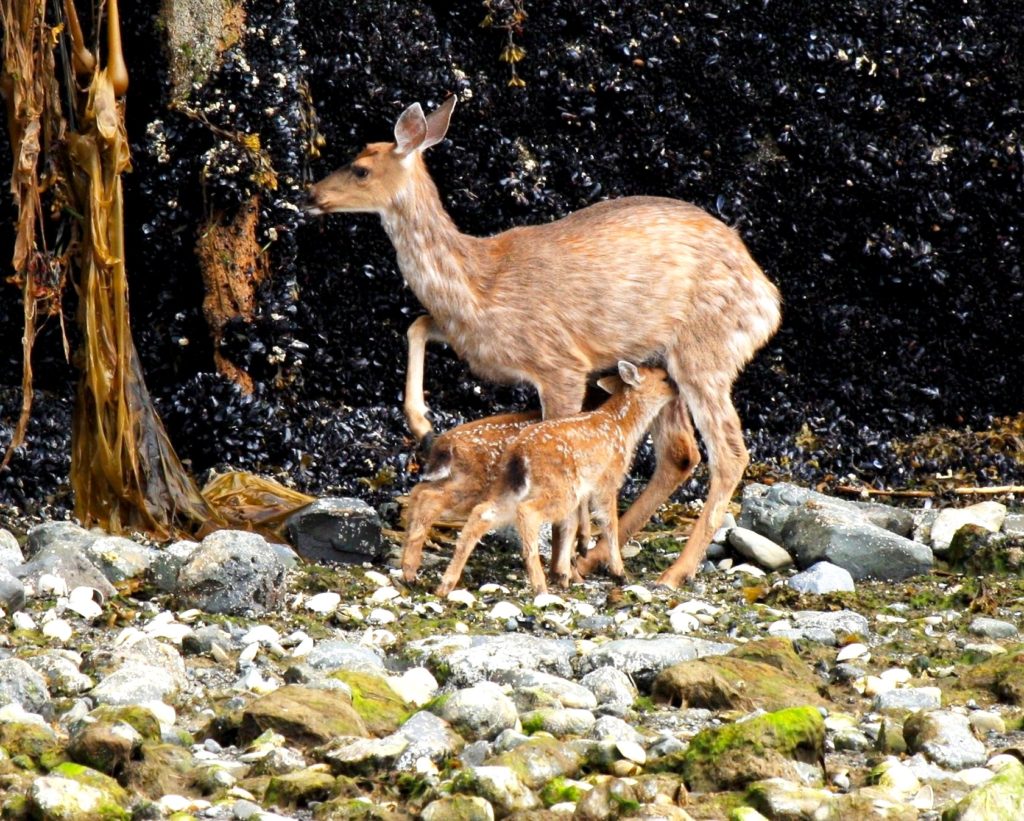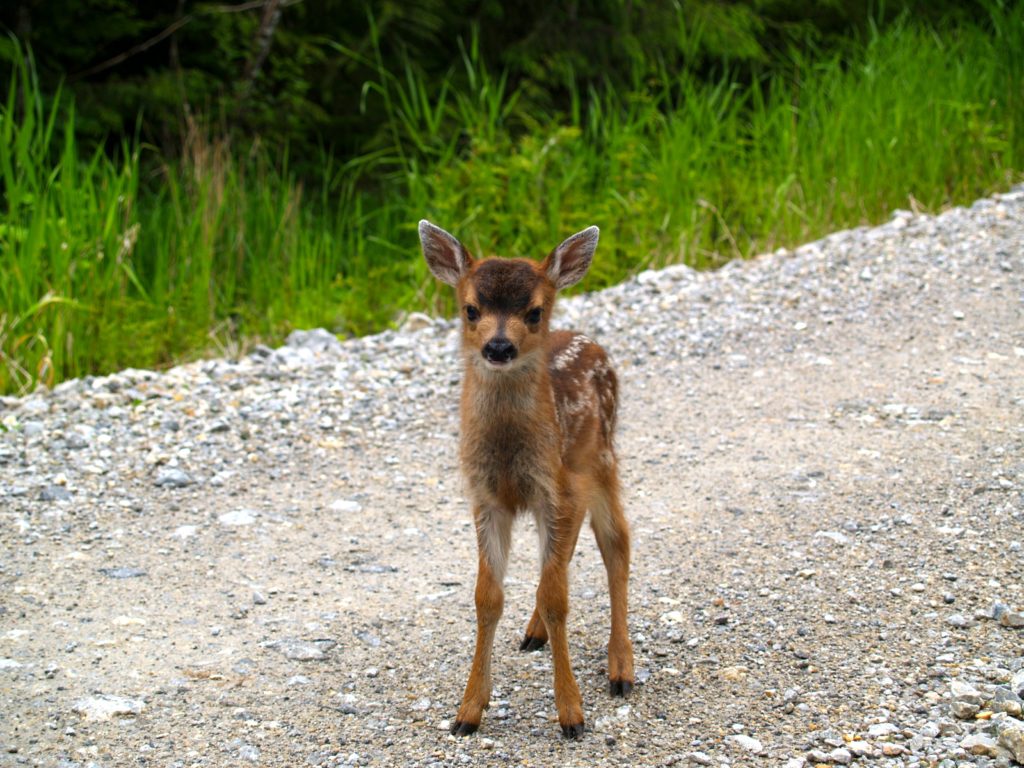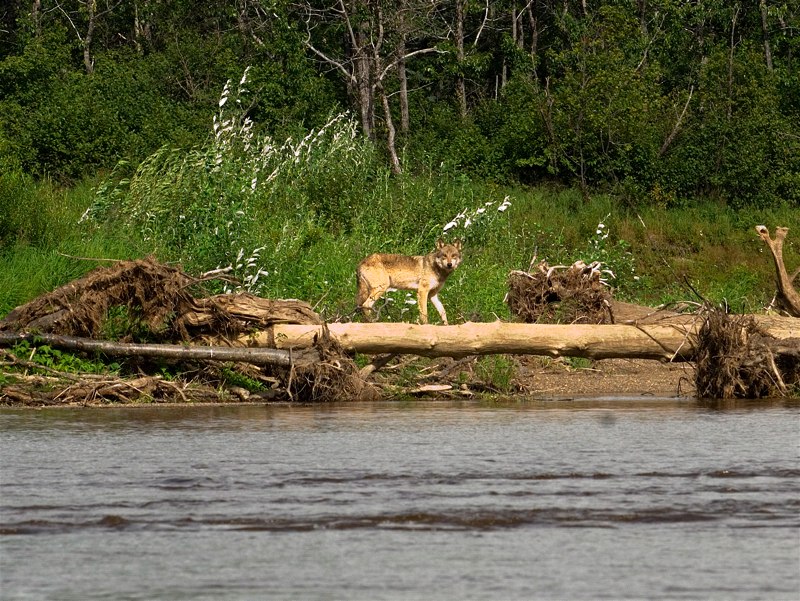
Spending time in the breathtaking natural wonder of the Tongass National Forest will make you appreciate how the local human population has cohabitated with the animal resource throughout history. Customizing a combination of land, sea, air and freshwater excursions will provide ideal conditions for photographing wildlife in their natural habitat. Prince of Wales Island’s unique combination of old-growth temperate rainforest surrounded by rich ocean waters makes it one of the most wildlife-rich regions in North America.

There are plenty of small land mammals on the island and thanks to an abundance of fresh salmon and a single species of deer, there is also an abundance of two large carnivore species: bear and gray wolf. Rising early gives the nature enthusiast a chance to catch these creatures at their most active, sidling up to the water’s edge, along the shorelines and lakes and rivers, in search of food and water. Our kayaks provide an inconspicuous platform for wildlife viewing with a nearly silent footprint.
Sitka Black-tailed deer fawns pepper the woods in May and June, stilting on shaky legs while mom keeps an eye out for hungry bear. The adult deer are the physically largest and have the biggest antler racks of their species in all of Alaska.
The creeks and streams of the island provide food and shelter to an entertaining array of animals. Critters from the weasel family abound, including marmots, marten, river otters, wolverine, ermine and mink. These small, active predators with long, slender bodies and short legs are prized for their fur. Trails of flattened lakeside reeds lead you to the activity of a “beaver lodge.” There are even the rare Alaskan amphibians, including some tree frogs and newts, but, to many guests’ relief, there are no snakes in Alaska.
 The island’s population of gray wolves, known as the Alexander Archipelago wolf, is unique for its willingness to doggy-paddle from island to island and their penchant for fresh salmon. The wolves, naturally shy and wary of humans, are scattered throughout the island. Although not as easily spotted as black bear, they are regularly heard at night and seen on camera traps. Wolves in Alaska depend on large mammals like moose, deer and caribou for their food, In Southeast Alaska, salmon are also an important food source, making up about 20% of their diet. Biologists have observed that protein-rich salmon may be especially important to young pups after they are weaned and find themselves at the bottom of the hierarchy in the pack. Wolves come to estuaries and creeks to fish for salmon in July and August, but even hunkering down in remote bays and shorelines can lead to only a glimpse of the elusive grey wolf packs.
The island’s population of gray wolves, known as the Alexander Archipelago wolf, is unique for its willingness to doggy-paddle from island to island and their penchant for fresh salmon. The wolves, naturally shy and wary of humans, are scattered throughout the island. Although not as easily spotted as black bear, they are regularly heard at night and seen on camera traps. Wolves in Alaska depend on large mammals like moose, deer and caribou for their food, In Southeast Alaska, salmon are also an important food source, making up about 20% of their diet. Biologists have observed that protein-rich salmon may be especially important to young pups after they are weaned and find themselves at the bottom of the hierarchy in the pack. Wolves come to estuaries and creeks to fish for salmon in July and August, but even hunkering down in remote bays and shorelines can lead to only a glimpse of the elusive grey wolf packs.
Whales & Marine Life
Opportunity to tell user what they will find here.

